Were you out at St. Kilda Beach last weekend, and now your cheeks look like you ran a marathon—except the color won’t fade? Or maybe those rosy patches have been sticking around since before footy season. Most people shrug off a sunburn, slap on some aloe, and hope for the best. But when that redness lingers and refuses to cool down, you can't help but start to wonder: is this still sunburn, or am I dealing with rosacea?
Sunburn vs Rosacea: Spot the Real Culprit
On paper, a flushed, red face sounds like a simple case of too much sun. And in a place like Melbourne, those UV rays can bite hard—even in June. Sunburn is the body’s immediate protest to overexposure: think hot, tight, or peeling skin. In contrast, rosacea creeps up subtly. It’s not loud after just one Saturday outside, but more persistent, like a bad habit you can’t drop. For some, it’s occasional blushing that overstays its welcome. For others, it looks like spider veins, bumps, or rough skin across the nose, cheeks, even chin. Where sunburn usually fades after a few days (or at worst, a week), rosacea hangs about stubbornly.
Here’s something that surprises a lot of us: if your skin stings or burns with seemingly no reason, or reacts strongly to spicy food, alcohol, or quick temperature changes, you’re ticking rosacea boxes, not sunburn. Statistically, rosacea impacts more than 5% of Aussie adults, but often goes undiagnosed. According to the Australian College of Dermatologists, most people chalk rosacea up to having sensitive skin—until the triggers become impossible to ignore.
Check for patterns. Is your redness symmetrical, on both sides of your face? Rosacea tends to do that. Got swelling or small pus-filled bumps (but zero sun exposure to blame)? That’s another classic rosacea sign. Sunburn rarely sticks around longer than a fortnight, except in cases of severe blistering. But rosacea, that’s a repeat offender, flaring up and simmering down without warning.
If your skin responds poorly to even gentle products you’ve used for years, and drugstore remedies are no match, it’s worth checking the sunburn rosacea resource for practical management tips before resigning yourself to a lifelong honeymoon glow.
Self-Assessment: Your DIY Dermatology Checklist
Not all of us have time, money, or patience to run to a dermatologist every time we see a hint of pink. So, look for these specific clues.
- Timeline: Did the redness develop after a known sun-exposure blunder? If so, how many days has it lingered? Sunburn should start to fade in 3-7 days.
- Symptoms: Is there any pain, blistering, or peeling? Classic sunburn. Dulled stinging, gradual swelling, or sudden sensitivity? Could be rosacea.
- Location: Sunburn commonly affects areas directly exposed to light—nose, forehead, shoulders. Rosacea lands across the middle of the face, usually skipping the areas your sunglasses covered.
- Triggers: Does your face kick up after hot showers, wine, or stress? Rosacea loves triggers and can flare up at surprising moments.
- History: Do you regularly flush, blush, or break out in tiny bumps even when sun’s nowhere in sight?
- Age & Genetics: Rosacea often starts between 30-50, and runs in families with fair skin.
Still stuck? Check this table for a head-to-head comparison:
| Feature | Sunburn | Rosacea |
|---|---|---|
| Onset | Hours after sun exposure | Gradual, no obvious trigger |
| Duration | 3-7 days | Chronic/fluctuating |
| Symptoms | Pain, tightness, peeling, blisters | Redness, bumps, swelling, burning, spider veins |
| Triggers | Sunlight | Heat, stress, food, drink, skin products |
| Distribution | Any exposed skin | Central face |
| Family history | Rare | Common |
If you nod along to more than half of the rosacea points? It’s probably time for a proper workup.
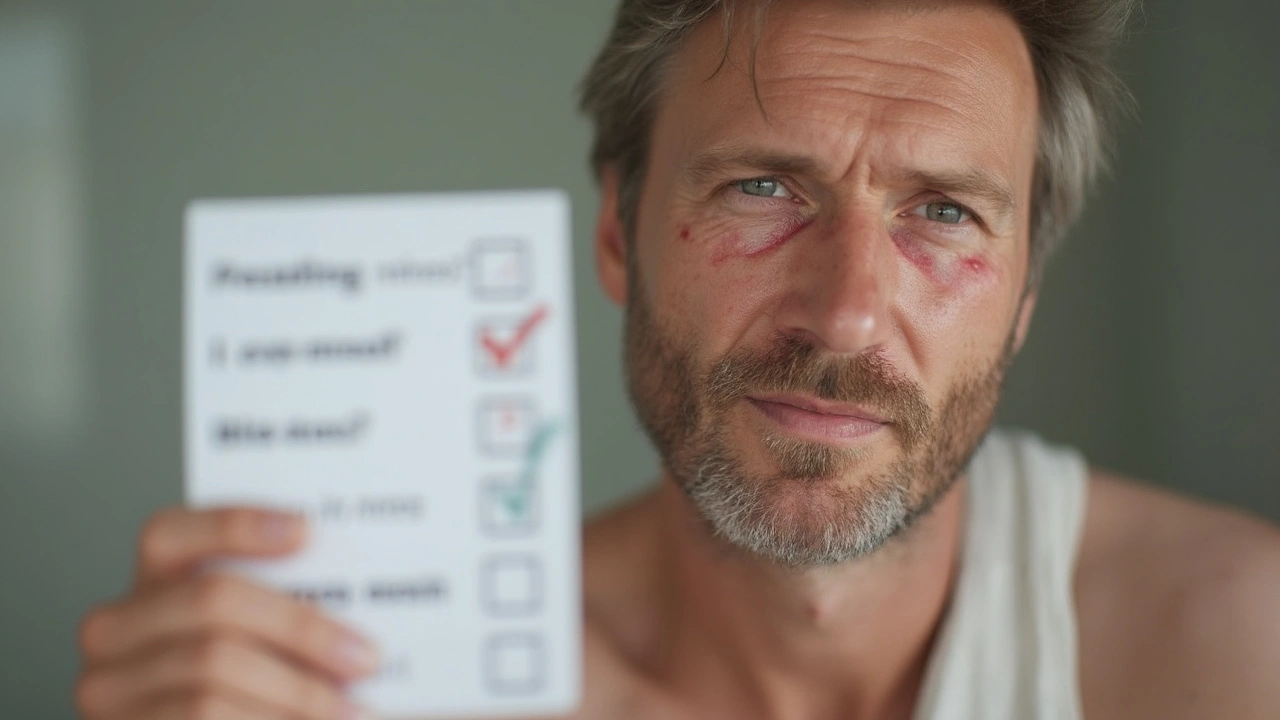
Should You See a Specialist or Not?
It’s tempting to wait things out, or just Google your path to healthy skin. But here’s the thing: persistent or worsening facial redness can signal more than vanity problems. Sometimes it’s rosacea, but rarely, things like lupus or allergic dermatitis can look pretty similar at first blush (pun intended).
Let’s be real. Nobody wants to spend a hundred bucks on a specialist for sunburn. But if redness fuels embarrassment, self-consciousness, or keeps you dodging social plans (been there), a dermatologist has ways to tame it that over-the-counter stuff can’t touch. Prescription creams, light therapy, or oral meds—these aren’t for the sunburn crowd.
Another kicker: untreated rosacea can snowball. With time, blood vessels become more visible, the skin thickens (especially the nose—a condition called rhinophyma), and inflammation sets in deep. There’s no cure, but the right treatment can shut down flares and keep your confidence intact. If what you think is sunburn keeps coming back every month, that’s not just tough luck. 2025’s best skin doctors can often diagnose rosacea with a single glance and a few questions. You don’t even need blood tests. Most folks find that a quick checkup leads to tweaks that make a night-and-day difference. You might walk out wishing you hadn’t put it off for a year.
Let’s put it bluntly: See a specialist if any of this is happening:
- Your redness won’t fade after a week, even with rest, aloe, or moisturiser
- You’ve got bumps, blisters, or swelling without obvious sun triggers
- Your skin burns, stings, or is suddenly sensitive to products or temperature shifts
- You see new veins or texture changes on your face
Simple Tips to Prevent Future Flares
You might be dealing with a bit of both sunburn and rosacea—one can kick off the other, thanks to the way UV rays ignite your immune system. Protecting your skin isn’t a one-size-fits-all job, but a few smart habits go a long way.
- Slather on broad spectrum SPF 50 sunscreen every morning, rain or shine (UV gets through clouds—just ask my kids Leighton and Zara, who never escape sunscreen duty).
- Wear wide-brimmed hats and avoid midday sun—the classic "slip, slop, slap."
- Keep a cool compress handy to soothe fiery cheeks after a hot meal or busy day.
- Read the labels: Alcohol, fragrance, and strong acids in skin care can set off sensitive faces.
- Know your triggers. Track food, drinks, temperature, and stress. If you see a pattern, try avoiding those sparks for a while—sometimes life-changing.
- If you’re treating rosacea, stick to gentle, minimal products. Less really is more here.
- Hydrate inside and out. Dry skin gets cranky; drink plenty of water and moisturise twice daily.
- Get regular check-ups. No shame in leaning on experts—skin is the biggest organ you’ve got.
Bumping into redness that just won’t disappear isn’t something you have to accept as your new normal. Whether you’re wrangling faint sunburn streaks or trying to untangle the mess that rosacea can make of your week, a targeted approach and a bit of expert help let you own your skin, not the other way around. Don’t wait for the next wind-burn season to get clarity—you deserve skin that feels as good as it looks under the Melbourne sun.

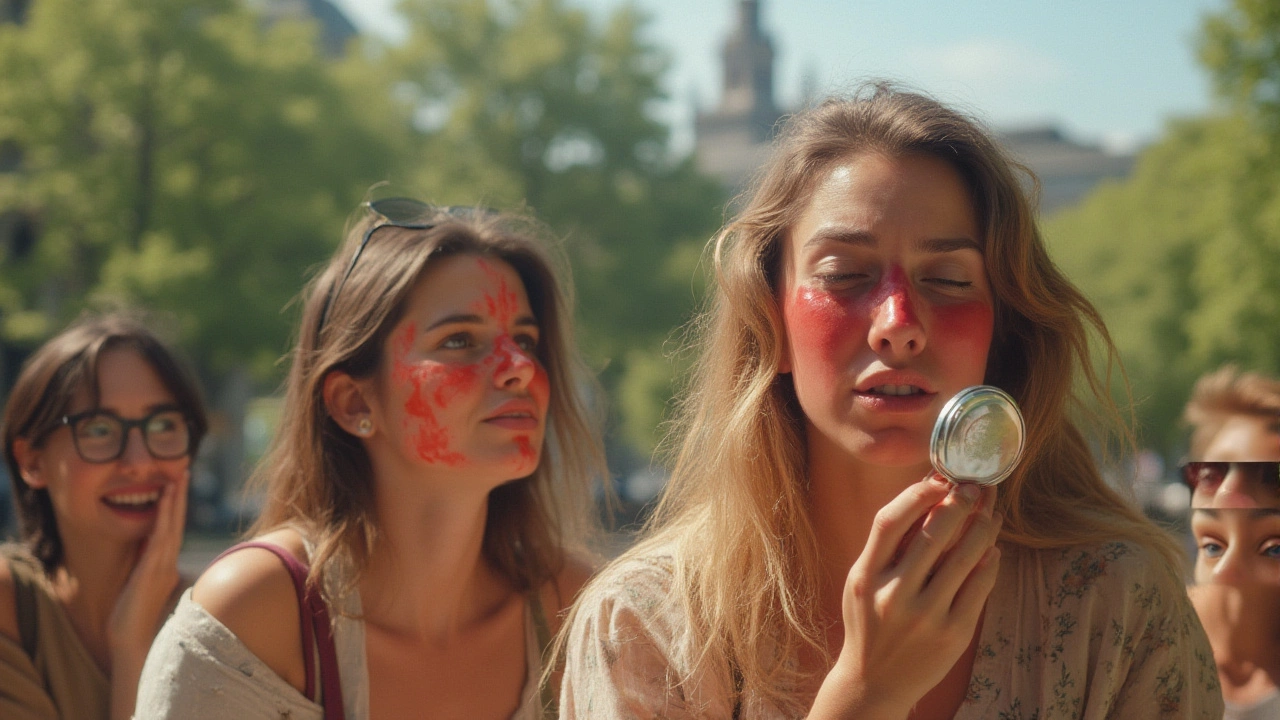
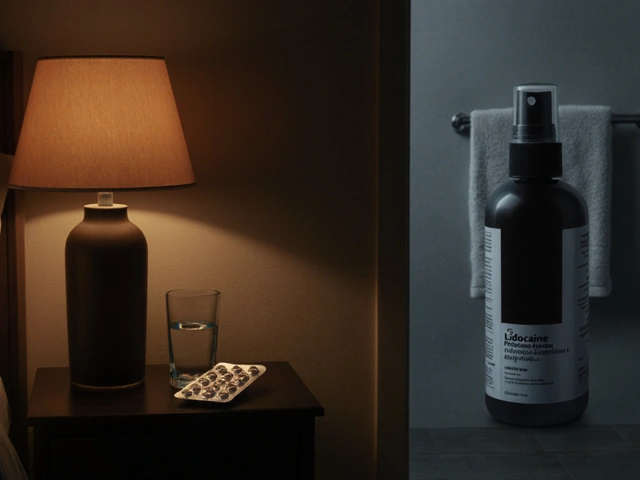

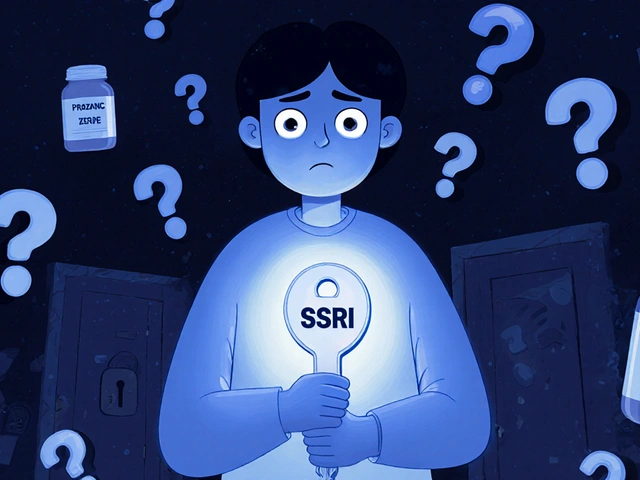
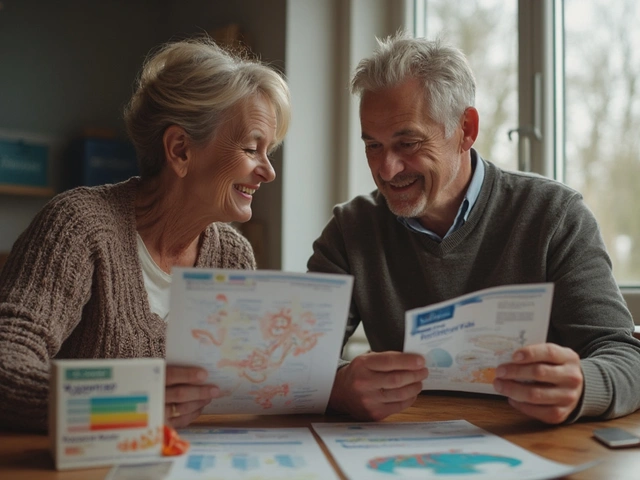

11 Comments
If you’ve ever stared at a reddened cheek and wondered whether the sun just pulled a fast one on you, you’re not alone. The line between a classic burn and a sneaky rosacea flare can feel as thin as a surfer’s board on a windy day. First, note the timing: a burn lights up within hours and usually bows out in a week, whereas rosacea likes to linger like a stubborn guest at a barbie. Pay attention to symmetry – rosacea loves to paint both sides of the face in the same shade of angry pink. If you’re feeling a constant low‑grade sting that doesn’t ease with aloe, you’re probably looking at a vascular issue, not just a sun‑kissed scar. Levels of pain are a big clue; sunburn hurts like a hot iron, while rosacea’s burn is more of a persisting buzz that flares with temperature swings. Triggers matter: spicy food, a glass of red, or a hot shower can send rosacea into overdrive, but they won’t make a sunburn suddenly reappear days later. Age and genetics also play a role – if a parent or grandparent has rosacea, your odds jump up significantly. The good news is that both conditions respond to protection, but the toolbox differs. For burns, stick to cool compresses, hydrating lotions, and give the skin time to slough off. For rosacea, you’ll want gentle, fragrance‑free moisturisers, prescription‑grade topicals, and a diligent SPF habit. Avoid heavy exfoliants and alcohol‑based serums; they’ll fan the flames of a rosacea flare. If you keep seeing new spider veins or a bumpy texture, book a dermatologist sooner rather than later. Early intervention can keep the condition from marching toward rhinophyma, a condition that’s far more difficult to reverse. Bottom line: track your triggers, note the duration, and when in doubt, let a professional set the game plan.
They dont want you to know that the sunscreen industry is secretly funding rosacea research to keep us buying their pricey creams
I’ve seen a lot of mates confuse the two and end up over‑applying harsh products. A simple rule that works for me is to check how quickly the redness fades; if it’s still bright after five days, think rosacea. Also, keep a tiny diary of foods and weather – patterns pop up fast. When you spot a pattern, dial back the triggers and give your skin a break from strong actives. If nothing improves, a quick visit to a skin doc will save you weeks of frustration.
One must appreciate the dermatological nuance distinguishing an acute photodamage episode from a chronic vascular dysregulation. The former manifests with epidermal erythema and desquamation, whereas the latter revels in telangiectatic proliferation. Consequently, therapeutic stratagems diverge dramatically, demanding either emollient-rich regimens or pharmacologic modulation of inflammatory cascades. Adopting this bifurcated perspective elevates one’s self‑care from mere habit to an artful practice.
It’s easy to feel overwhelmed when the face turns red and you’re not sure why. The checklist in the post already gives a solid foundation, but let me add a couple of extra tips. First, try a fragrance‑free barrier cream before stepping out; it can lessen both burn and rosacea irritation. Second, hydrate internally – water helps the skin repair itself from the inside out. Third, if you notice any eye involvement, don’t wait; ocular rosacea can affect vision if left untreated. Finally, remember that consistency is key; a steady routine often yields better results than occasional hero products.
Esteemed readers, the distinction between phototoxic injury and inflammatory dermatoses warrants meticulous attention. Temporal onset, anatomical distribution, and precipitating factors remain the principal diagnostic pillars. In clinical practice, I advocate for a tiered approach, commencing with rigorous photoprotection followed by targeted pharmacotherapy as indicated. Such an algorithm not only mitigates symptomatology but also forestalls long‑term sequelae. Should any of the aforementioned criteria be fulfilled, promptly arranging specialist consultation is advisable.
Oh dear, the skin is the canvas of our existential angst, and when it erupts in crimson, the universe seems to mock us. Is it mere sunburn, a fleeting reminder of our mortal fragility, or rosacea, the stubborn echo of deeper turmoil? I argue that every flare is a whispered confession from the self, demanding attention. The relentless dance between UV photons and our vascular tapestry writes a saga upon our cheeks. Yet we, the protagonists, often ignore the prologue and dive straight into the climax of despair. Embrace the wisdom of preventative rituals, for the alchemy of sunscreen and humility can transform tragedy into triumph. In the end, the skin may redden, but our spirit remains unblemished if we choose to see beyond the hue.
Right, because the British invented rosacea and the Aussies just got lucky with sunburns, obviously. Your post tries to act like it’s a universal guide, yet it forgets that only real men down under understand a proper burn. If you’re stuck with a red face, perhaps stop blaming foreign trends and just use the good old Aussie SPF 50. Honestly, the whole debate is a distraction from the real issue – people need to respect our sun‑loving culture.
Mate, you’ve got this – the first step is just noticing the pattern.
Make a quick chart on your phone: sun exposure, meals, stress, and the colour of your cheeks.
When you see a repeat, you’ve already won half the battle 😊.
Keep your routine simple: gentle cleanser, moisturizer, and sunscreen; no need for fancy stuff.
Stick with it for a couple of weeks and you’ll see the difference, promise.
The complexion, like the mind, reflects the interplay of external forces and internal equilibrium. When photic energy exceeds the skin’s homeostatic capacity, a transient erythema ensues, analogous to a fleeting emotional surge. Conversely, rosacea epitomizes a chronic dysregulation, a perpetual echo of vascular hyperreactivity. Philosophically, one might view the diligent application of sunscreen as a moral duty to preserve the vessel of perception. Thus, the prudent individual balances protection with introspection, seeking professional counsel when the self‑regulation falters.
Quietly remember that consistent care beats occasional panic. If you’re still unsure, a brief chat with a dermatologist can bring clarity.